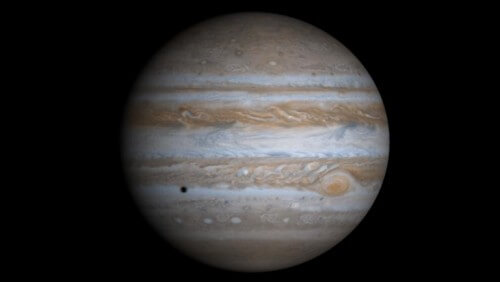In 2030, scientists from all over the world will start receiving data that will be sent from a research spacecraft that will move in orbit around the planet Jupiter. This is the research spacecraft JUICE, which will be launched in 2022 and will reach the distant planet as part of a mission of the European Space Agency (ESA). On the spacecraft will also be a measuring device initiated and defined by Weizmann Institute of Science scientists, and built by the Israeli company Acubit, with funding from the Ministry of Science, Technology and Space.

"This is the first time that a device built in Israel will go beyond the orbits of satellites around the Earth," says Dr. Yohai Caspi from the Department of Earth and Planetary Sciences at the Weizmann Institute of Science. Dr. Caspi leads the project, called 3GM, in collaboration with an Italian research group from the University of Rome. The Israeli contribution to the project is an atomic clock, which will be able to measure minute fluctuations in a radio beam - which the spacecraft will transmit. For this purpose, Dr. Caspi contacted the company Acubit, which manufactures watches for advanced aircraft. Dr. Caspi's research group - which included Dr. Eli Galanti and Dr. Marcia Parisi - in collaboration with Acubit engineers, have so far invested two years of work in the research and development of the device, which will be accurate to the point of a deviation of one second every 100,000 years. And that he will be able to survive the eight years of the journey, and function in the difficult conditions to which he will be exposed in space.
Members of the research group will study Jupiter's atmosphere by intercepting the radio waves traveling in the planet's gas, timing them and measuring the angle at which the waves collide and return. These measurements will allow the team to decipher the characteristics of the gaseous planet's atmosphere.
In its planned orbit, the spacecraft will pass near three of Jupiter's moons - Europa, Ganymede and Callisto - where the scientists will look for fluctuations in the moons' gravitational field resulting from tidal forces exerted by the planet. Such fluctuations have already been recorded in the past, suggesting that Jupiter's large mass causes tides in the oceans located beneath the icy mantle on the surface of the moons. By measuring the changes in gravity, scientists hope to learn how big these oceans are, what they are made of, and whether the conditions in them might be suitable for sustaining life on Jupiter's moons.
The research team building the JUICE spacecraft is preparing for launch, which will take place in six years. In the meantime, the members of the 3GM group will have to finish the work on the research systems, install them in the spacecraft and carry out strict quality control. In the following eight years - the time that will elapse between the launch of the spacecraft and its arrival at Jupiter - Dr. Caspi and the members of his group plan to develop physical models with which the scientists will decipher the data collected by the instruments on board the spacecraft.

One response
https://en.wikipedia.org/wiki/Jupiter_Icy_Moon_Explorer